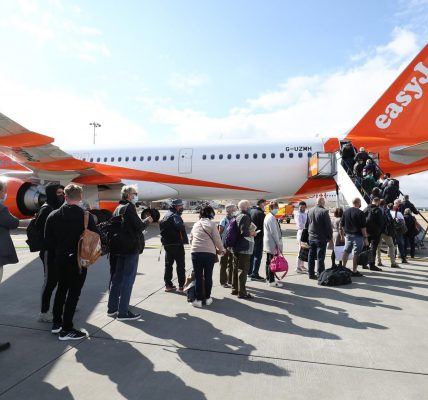Isuzu D-Max first drive: rugged pick-up toughens up its act
As several brands pull out of the pick-up market, does the new D-Max have what it takes to beat the Ford Ranger and Toyota Hilux?
The pick-up market in the UK is in a strange position at the moment. While sales have been strong in recent years, with a growing appetite for high-priced lifestyle versions, several key players have left or are planning to leave the segment.
Mitsubishi, whose L200 has long been a mainstay of the segment is pulling out of Europe entirely, Volkswagen is withdrawing the Amorak this year and is cagey about whether we’ll get its replacement, Nissan won’t bring the next-gen Navara to the UK and Mercedes and Fiat both admitted defeat in the last couple of years, quietly dropping the unpopular X-Class and Fullback.
This exodus means we’ve now got fewer than half the number of trucks compared to just two years ago. Still standing are the near-iconic Toyota Hilux, the best-selling Ford Ranger, SsangYong’s budget Musso and the Isuzu D-Max.
The arrival of the new D-Max just as we lose so many rivals is coincidental but it’s a fortunate piece of timing for the Japanese specialist, offering a chance to stake a bigger claim and tempt buyers away from their Rangers and Hiluxes.
To do so, it’s going to have to juggle the reliable ruggedness the truck is known for with more lifestyle oriented, high-spec offerings.
D-Max trims, prices and specifications
Isuzu is keen to emphasise that its trucks have always been workhorses first and foremost. That, it says, won’t change but this latest model does put more emphasis on creature comforts and ease of use. And the sales projections predict that the lifestyle end of the range will take up more sales at the expense of basic “Business” trucks.
That said, the D-Max range still starts with a basic single cab, two-wheel-drive truck priced from £21,009 (before VAT). This features easy-clean vinyl flooring, tough black plastic bumpers and a 2.3m load bed with practical tiedown hooks. Business models are also available with four-wheel-drive and in extended and double cab formats which add more passenger space but reduce the load bed area.
For buyers who want to use their truck for work and play the “All-Purpose” range offers DL20 (£26,009 before VAT) and DL40 (£29,759) trims which retain the toughness of the Business range but bring luxuries such as body coloured bumpers, heated seats, an optional automatic transmission and a locking rear differential.
At the top of the range sits the Adventure range, which until the inevitable Arctic Trucks conversions arrive, consists of just the V-Cross, priced from £31,259 before VAT. This piles on more technology such as a nine-inch touchscreen and flashy exterior trim, but shares the same core capabilities as the other two models.
Equipment is one of the D-Max’s strongest suits and its generous spec on even the most basic models gives it an edge over rivals. Convenient features across the range include auto lights and wipers, high beam assist, hill start assist and descent control, a tailgate damper and air conditioning, with higher spec versions adding everything from parking sensors, LED headlights and rear cab ventilation to smartphone mirroring, keyless entry and leather upholstery.
All versions also get a full driver assistance suite which has helped earn the D-Max a five-star Euro NCAP rating. Stereo front-facing cameras, forward collision warning, autonomous emergency braking, traffic sign recognition, lane departure prevention and intelligent speed limiter are standard, as is cruise control. Double cab versions all get blind spot warning and rear cross traffic alert while adaptive cruise control and lane keep assist appear on auto versions from DL20 spec upwards.
D-Max practicality
Every variant of the D-Max can tow up to 3,500kg and carry a payload of up more than a tonne. Four-wheel-drive versions feature high and low-range options and the shift-on-the-fly function allows far faster and smoother shifts from two- to four-wheel drive and back. The chassis has been significantly strengthened for better rigidity and refinement, the suspension redesigned for better control and comfort and there’s more underbody protection plus trailer sway protection is standard on all 4×4 variants.
Isuzu is also very proud of the fact that all variants of the D-Max weigh under 2,040kg, meaning the extended and double cab versions are subject to passenger car speed limits rather than the 10mph lower ones imposed on commercial trucks.
D-Max engine and performance
Whether you opt for a basic Business truck or our tested V-Cross, every D-Max comes with a 1.9-litre, four-cylinder diesel offering 162bhp and 266lb ft of torque. The only choice is whether you want a six-speed manual or six-speed auto transmission.
As you’d expect from a pick-up, pace isn’t the D-Max’s strong suit, with 0-62mph taking a ponderous 13 seconds but plenty of low-down torque means it’s adept at hauling itself around tough terrain. This was demonstrated on the sharp inclines, deep water troughs and loose surfaces of our quarry-based off-road route which the D-Max managed easily.
Back on the open road, the engine is noisy at anything except a gentle cruise – one area where rivals such as the Ranger, Hilux and outgoing L200 have a clear advantage. Those rivals also have the D-Max beaten in overall road manners. This model’s ride and handling are a big improvement on the old D-Max with noticeably less judder when it’s unladen but its key rivals still feel more settled and composed on Tarmac. For utility users this might not be so much of a concern but it could prove problematic for lifestyle buyers demanding a more SUV-like experience.
D-Max interior and comfort
It’s a similar story when it comes to the D-Max’s interior. It too is a leap forward from what came before but not quite up to the standard of the segment leaders. A good driving position with plenty of seat and steering wheel adjustment makes it a comfortable truck to drive. Rear passengers are also pretty well catered for with 20mm of extra legroom and redesigned seats offering better space and comfort. The main centre console and controls are a big improvement in terms of look, feel and operation and high-spec trucks get leather upholstery and leather effect dash topper but elsewhere the materials are distinctly utilitarian, even in the top-spec V-Cross.
Verdict
That overlap between the Business and Adventure models could hamper Isuzu’s hopes of extending its share of the lifestyle segment. The new D-Max is a clear improvement on the old model and as an entry-level workhorse, it is practical, capable and well equipped. The same is true for the V-Cross but the rough edges of the commercial vehicle are still far more apparent in it than in more refined rivals.
£39,244.80 (£32,759 exc VAT); 1.9-litre, four-cylinder, diesel; 162bhp; 266lb ft; Six-speed automatic, four-wheel-drive; 112mph; 13 seconds; 30/7mpg; 241g/km










